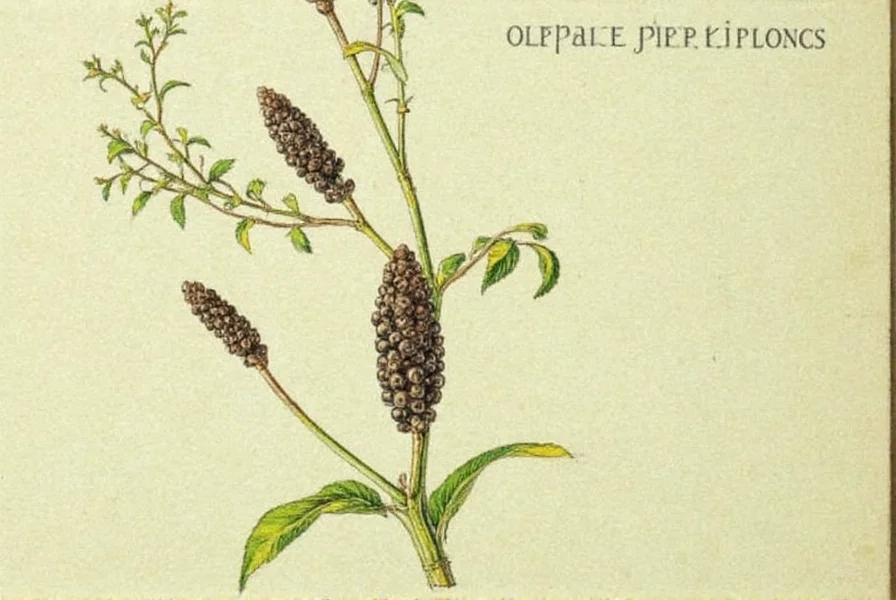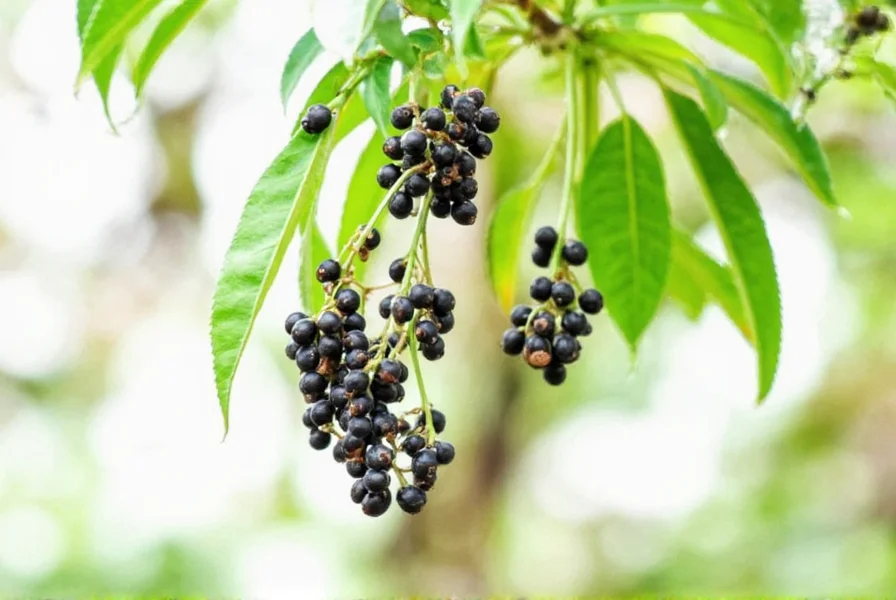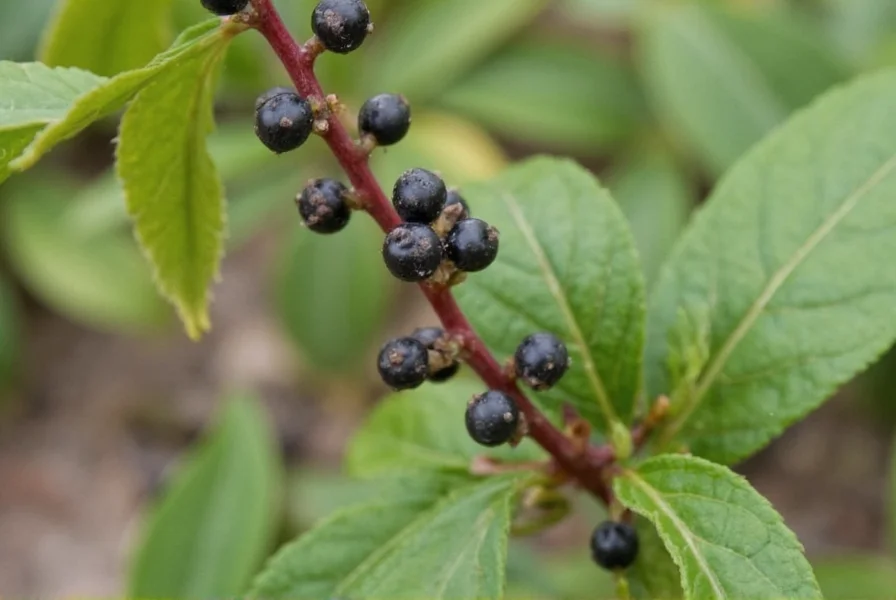Understanding the botanical identity of black pepper resolves widespread confusion about pepper varieties. Piper nigrum belongs to the Piperaceae family and is native to South India's Malabar Coast, though now cultivated across tropical regions. The plant produces small fruits called 'peppercorns' that transform into different pepper types based solely on harvest timing and processing methods - not different species.
Botanical Classification and Characteristics
Piper nigrum is a perennial climbing vine that can reach 10 meters in height when supported by trees or structures. Its botanical classification follows:
| Taxonomic Rank | Classification |
|---|---|
| Kingdom | Plantae |
| Clade | Tracheophytes, Angiosperms, Magnoliids |
| Order | Piperales |
| Family | Piperaceae |
| Genus | Piper |
| Species | P. nigrum |
The vine produces heart-shaped leaves and small flowers in hanging spikes. The peppercorns begin as green berries that ripen to red. Each berry contains a single seed surrounded by multiple layers that determine the final pepper type through processing.

How One Plant Creates Multiple Pepper Types
The remarkable diversity in pepper appearance and flavor stems entirely from processing techniques applied to Piper nigrum berries:
- Black peppercorns: Harvested when nearly ripe (green), briefly cooked in hot water, then sun-dried. The outer layer turns black and wrinkled through enzymatic oxidation.
- White peppercorns: Fully ripe red berries soaked to remove the outer fruit layer, leaving only the seed which is then dried to pale color.
- Green peppercorns: Unripe berries preserved through freeze-drying, brining, or sulfur dioxide treatment to maintain green color.
- Red peppercorns: Fully ripe berries preserved immediately to retain red color, often in brine or vinegar.
This processing variation explains why all culinary peppers share identical chemical compounds like piperine (responsible for pungency) but differ in flavor complexity. Black pepper contains additional compounds developed during fermentation and drying that create its distinctive sharp, complex profile compared to milder white pepper.
Historical Significance and Global Trade
Piper nigrum has shaped human history since ancient times. Indian texts dating to 1000 BCE reference black pepper, and it became so valuable in Roman times that it was used as currency. The search for direct access to Piper nigrum cultivation drove European exploration, with Portuguese explorer Vasco da Gama's 1498 voyage to India primarily motivated by securing pepper trade routes.
During the Middle Ages, a pound of black pepper could purchase a slave or settle a debt. The Dutch and British East India Companies waged wars over control of Piper nigrum plantations. This single plant's economic importance earned it the nickname 'black gold' and fundamentally influenced global trade patterns for centuries.
Common Misconceptions Clarified
Several persistent myths surround Piper nigrum that require clarification:
- Myth: Black, white, and green peppers come from different plants
Fact: All derive from Piper nigrum through different processing - Myth: Red pepper and black pepper are closely related
Fact: Red chili peppers belong to Capsicum genus, completely unrelated to Piper nigrum - Myth: Long pepper (Piper longum) is a variety of black pepper
Fact: Long pepper is a distinct species with different flavor profile and historical usage
The confusion often stems from inconsistent naming conventions. While 'pepper' refers to Piper nigrum products, 'chili peppers' and 'bell peppers' belong to the nightshade family (Solanaceae), sharing no botanical relationship despite the common name.

Modern Cultivation and Quality Factors
Today, Vietnam produces approximately 34% of the world's Piper nigrum, followed by Indonesia, India, and Brazil. The highest quality black peppercorns typically come from India's Malabar Coast and Tellicherry region, where traditional sun-drying methods preserve complex flavor compounds.
Quality assessment considers several factors:
- Size and uniformity: Larger peppercorns (Tellicherry grade) often indicate better flavor development
- Aroma intensity: Fresh peppercorns should have strong, penetrating scent
- Oil content: Higher essential oil content correlates with stronger flavor
- Piperine concentration: Typically 5-9% in high-quality black pepper
Proper storage in airtight containers away from light preserves volatile compounds that degrade when exposed to oxygen. Whole peppercorns maintain flavor significantly longer than pre-ground pepper, which loses aromatic compounds within weeks.
Scientific Research on Piper nigrum
Modern research confirms traditional uses of Piper nigrum beyond seasoning. Studies show piperine enhances nutrient absorption, particularly curcumin from turmeric, by up to 2000%. The plant contains over 50 volatile compounds contributing to its complex flavor profile and potential health benefits.
Research published in the Journal of Agricultural and Food Chemistry identifies beta-caryophyllene as a significant anti-inflammatory compound in black pepper. However, these findings represent preliminary research on isolated compounds, not medical recommendations for pepper consumption.
Frequently Asked Questions
Is Piper nigrum the same as black pepper?
Yes, Piper nigrum is the scientific name for the plant that produces black pepper. The black peppercorns are the dried, unripe fruit of the Piper nigrum vine. This single plant species also produces white, green, and red peppercorns through different processing methods.
Why does black pepper have the scientific name Piper nigrum?
The name 'Piper nigrum' comes from Latin, where 'piper' refers to pepper and 'nigrum' means black. Ancient Romans used 'piper' for the spice, derived from the Sanskrit word 'pippali.' Swedish botanist Carl Linnaeus formally classified the plant as Piper nigrum in 1753 to distinguish it from other pepper varieties.
Can you grow black pepper (Piper nigrum) at home?
Yes, Piper nigrum can be grown indoors in non-tropical climates with proper care. It requires warm temperatures (75-85°F), high humidity (60-80%), indirect sunlight, and a support structure to climb. The plant needs well-draining soil and consistent moisture. Home growers typically harvest peppercorns after 3-4 years when the vine matures, though fruit production may be limited outside tropical environments.
What's the difference between black pepper and white pepper beyond color?
Beyond color, black and white pepper differ significantly in flavor profile and chemical composition. Black pepper contains additional compounds developed during the sun-drying process, giving it a more complex, sharper, and fruitier flavor with higher piperine content (5-9%). White pepper undergoes fermentation to remove the outer layer, resulting in a milder, earthier flavor with lower piperine concentration (3-5%) and different volatile compounds.
Is all black pepper derived from Piper nigrum?
True black pepper always comes from Piper nigrum. However, some products marketed as 'pepper' may contain substitutes or adulterants. Long pepper (Piper longum) and Sichuan pepper (from Zanthoxylum plants) are sometimes confused with black pepper but belong to different plant species. Authentic black pepper products should specify Piper nigrum as the source.











 浙公网安备
33010002000092号
浙公网安备
33010002000092号 浙B2-20120091-4
浙B2-20120091-4